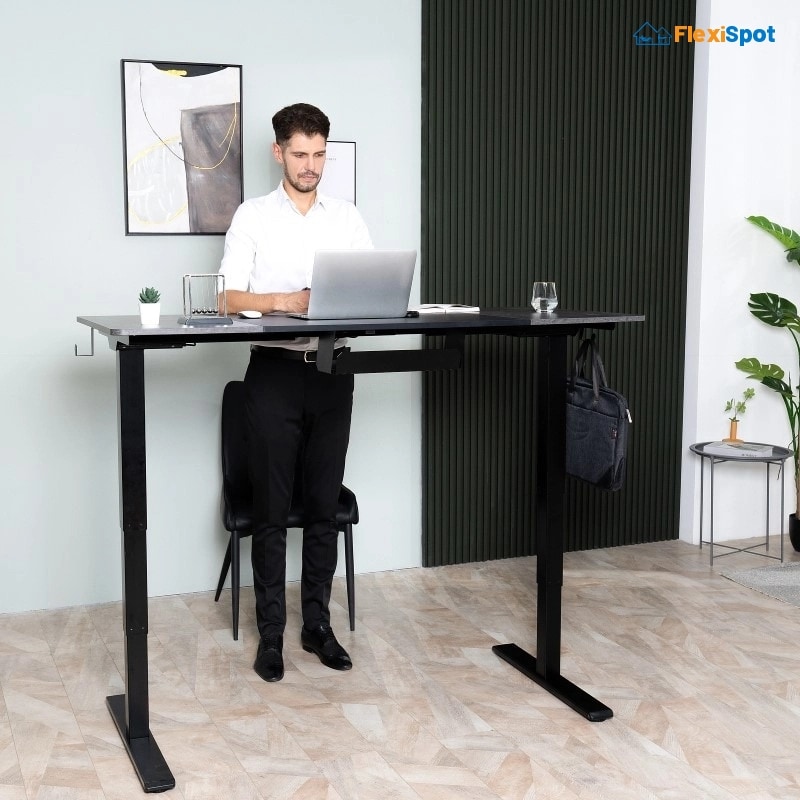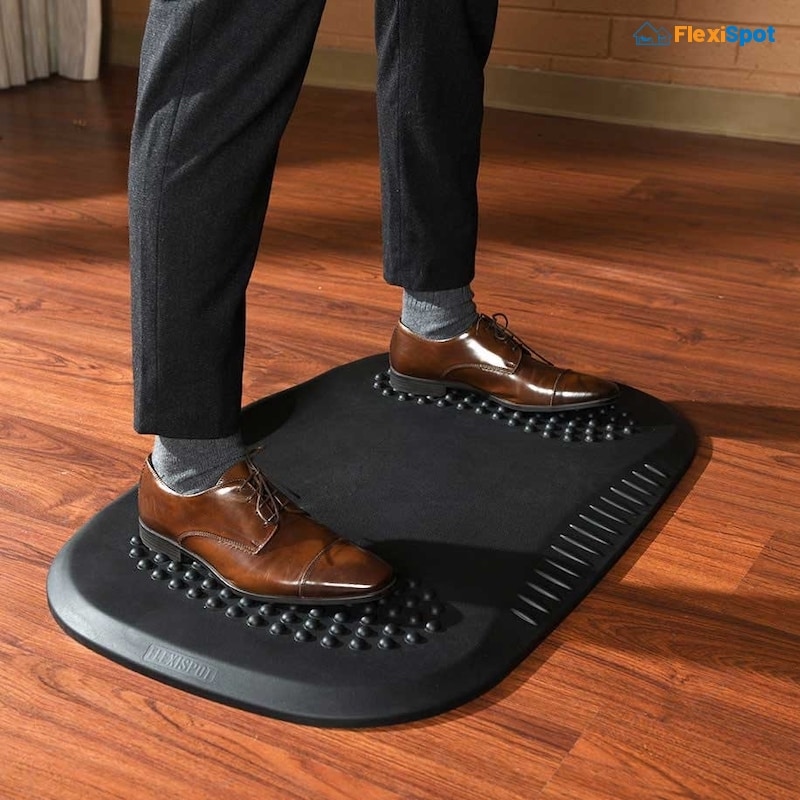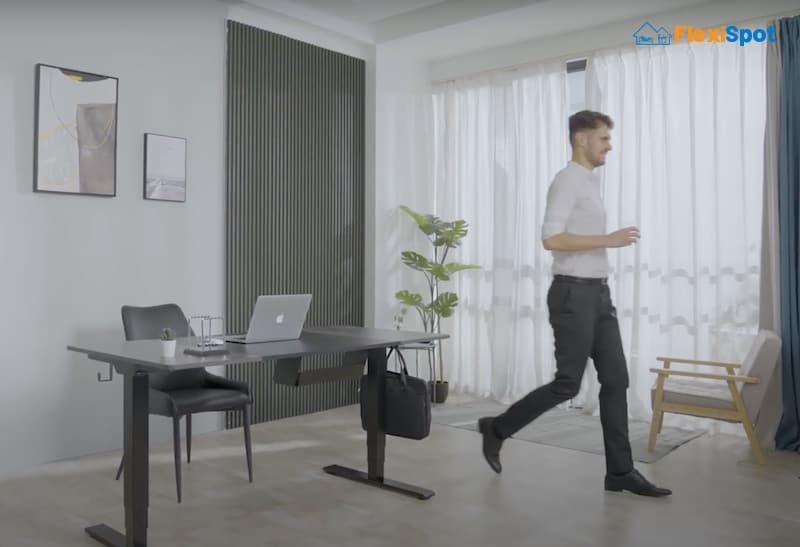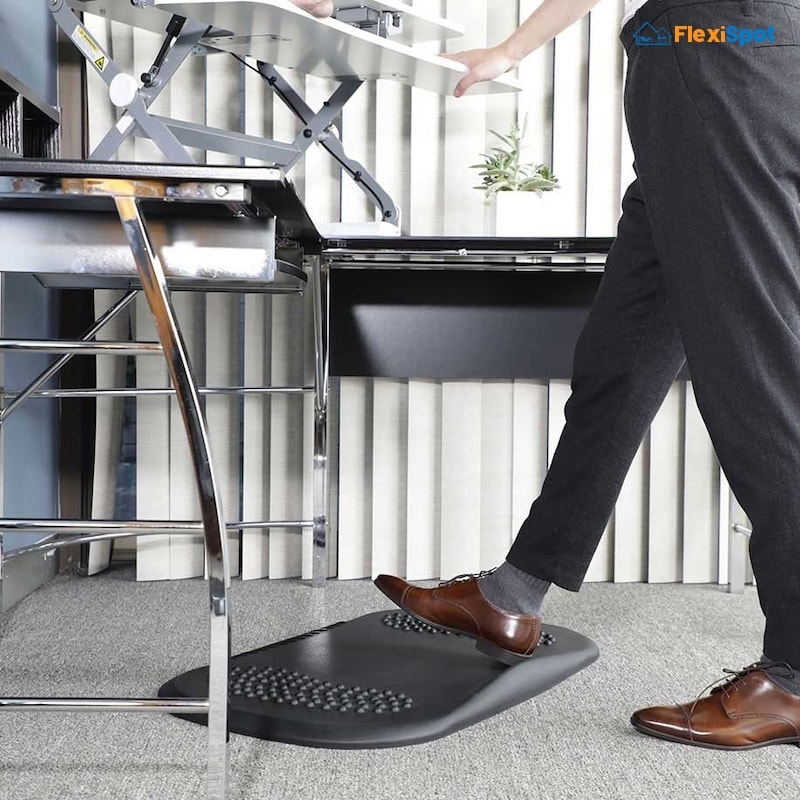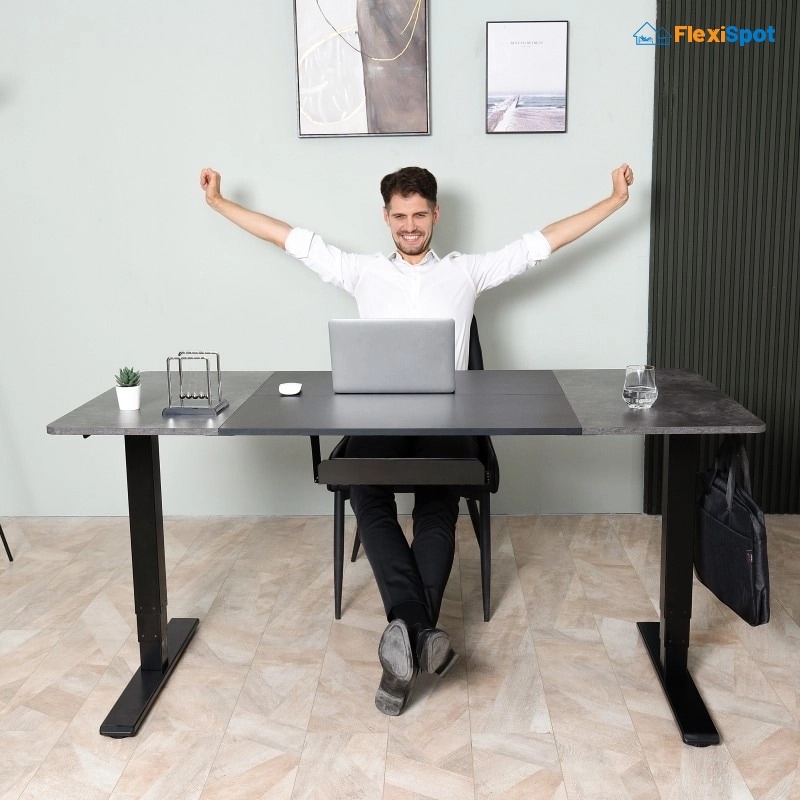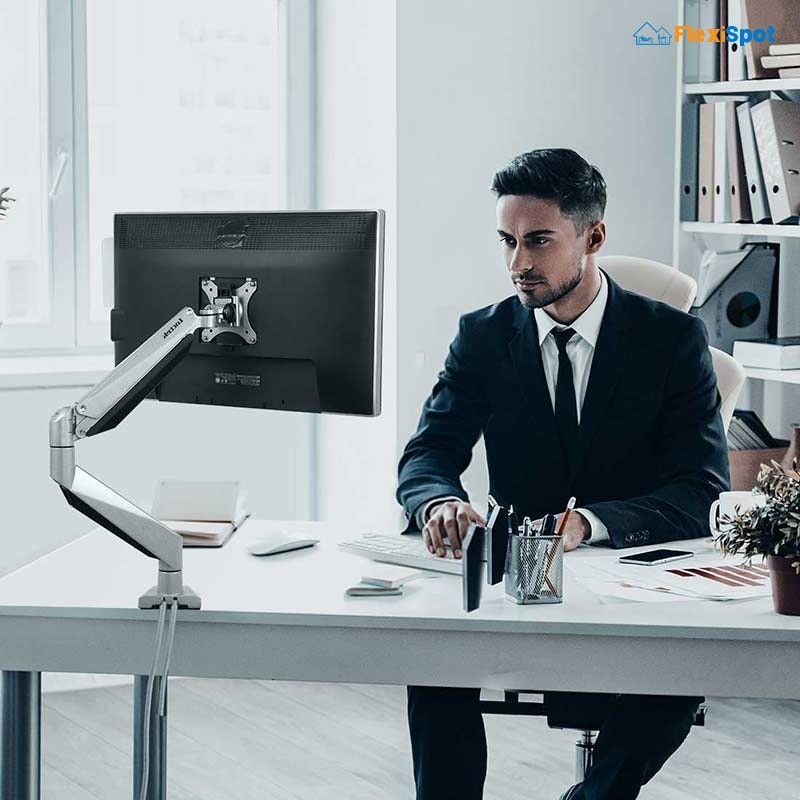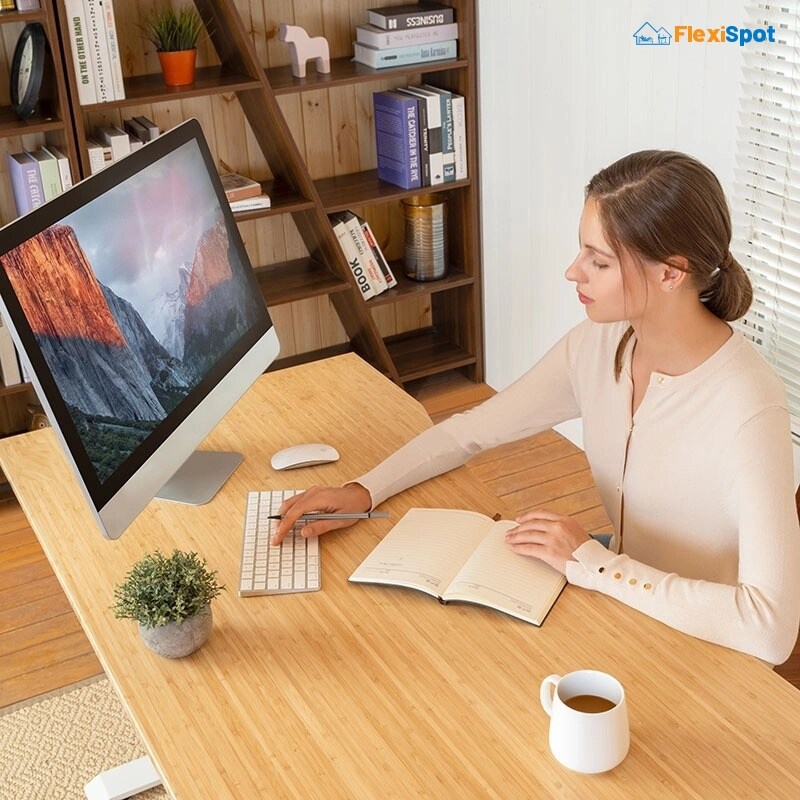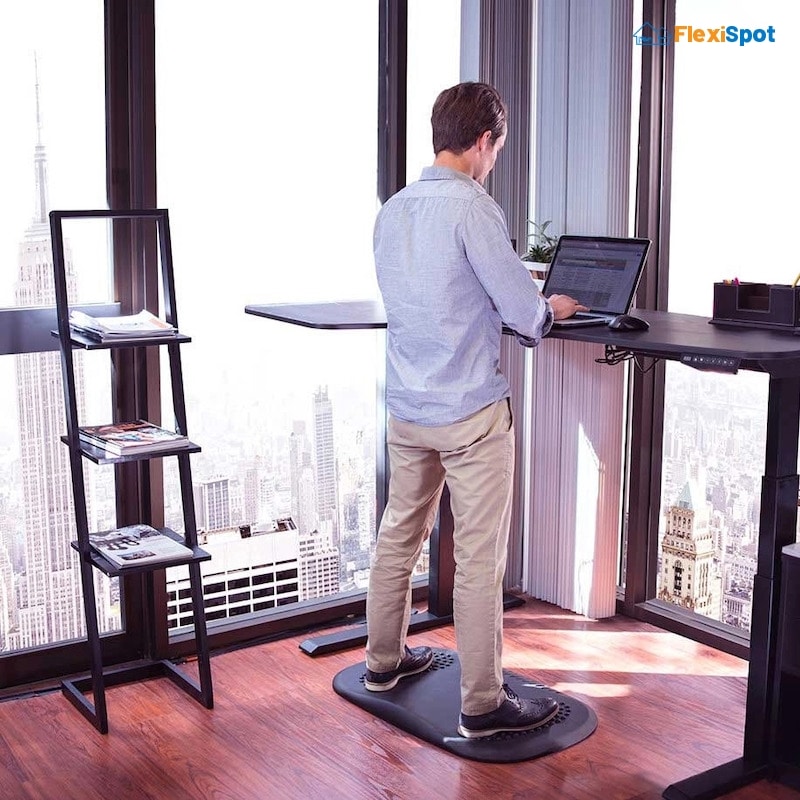Standing desks have become increasingly popular in recent years as more people look for ways to improve their health and well-being. There are many benefits to using a standing desk, including improved posture, increased calorie burn, and reduced risk of heart disease. However, there are also some potential downsides to using a standing desk, such as an increased risk of varicose veins and leg cramps.
When using a standing desk, it's important to keep a few things in mind to make the most of its benefits and avoid any negative effects. This is what I'll be covering in this piece today to give you a clear image of what you should do to get the most out of your standing desk.
Make Sure Your Standing Desk Is at the Right Height
It's important to ensure your standing desk is at the right height. This will help you avoid back pain and other problems associated with using a standing desk.
Here are a few tips to keep in mind:
First, measure the distance from the floor to your elbow. This is the minimum height your standing desk should be.
Next, measure the distance from the floor to your waist. This is the maximum height your standing desk should be.
Adjust the height of your standing desk so that it's somewhere in between these two measurements.
If you're using a laptop on your standing desk, make sure to use a separate keyboard and mouse. This will help you keep your posture in check.
Following these tips will help you use your standing desk the right way and avoid any problems associated with
Use an Anti-fatigue Mat to Help Reduce Discomfort in Your Feet and Legs
Standing desks are becoming increasingly popular in today's workforce. Many people are opting to use them to avoid the health risks associated with sitting for long periods. While standing desks provide many benefits, they can also cause discomfort in your feet and legs if you are not using an anti-fatigue mat.
Anti-fatigue mats are designed to provide cushioning and support for your feet and legs. They help reduce the pressure on your feet and legs, which can lead to discomfort. In addition, anti-fatigue mats can help improve your feet and legs circulation.
There are many different types of anti-fatigue mats available on the market. You can choose mats made of foam, gel, or even air. It is important to select a mat that is comfortable for you and that provides the level of support that you need.
Take Breaks Often When Using a Standing Desk
When using a standing desk, it is important to take breaks often. This allows your body to adjust to the new position and prevents fatigue. Standing for long periods of time can lead to pain in the feet, legs, and back. Taking breaks helps to avoid these problems.
It is best to take a break every 20 minutes or so. Get up and walk around for a few minutes. Stretch your arms and legs. This will help to keep your blood flowing and will prevent cramps.
If you start to feel pain, take a break immediately. Pain is your body’s way of telling you that something is wrong. Ignoring the pain can lead to further injury. Taking breaks often is an important part of using a standing desk. It will help you avoid pain and injury and allow you to use your standing desk for long periods.
Invest in a Good Pair of Shoes
When you use a standing desk, it's important to have a good pair of shoes. Investing in comfortable, supportive shoes will help you avoid pain and fatigue while you're working. Look for shoes with good arch support and cushioning to protect your feet, ankles, and knees. If you can't find shoes that meet all of those criteria, consider adding an anti-fatigue mat to your workspace to help reduce foot pain.
Stretch Your Legs and Back Often While Using a Standing Desk
Keeping your legs and back healthy when using a standing desk is important. By stretching your legs and back often, you can help prevent pain and injury.
Here are some stretches that you can do while using a standing desk:
Hamstring stretch: Place your feet hip-width apart and bend forward at the hips, keeping your back straight. Reach for your ankles, hold for 30 seconds, and repeat 3 times.
Calf stretch: Place your hands on a desk or countertop and step back with one leg. Keeping your heel down, bend your front knee, and lean forward until you feel a stretch in the calf of your back leg. Hold for 30 seconds and repeat 3 times.
Back stretch: Place your hands on your hips and arch your back, exhaling as you do so. Hold for 5 seconds and repeat 10 times.
In addition to stretches, it is also important to move around often when using a standing desk. Taking a short walk every 20 minutes can help keep your legs and back from getting too stiff.
If you start to experience pain when using a standing desk, be sure to stop and rest. Pain is your body’s way of telling you that something is wrong. If the pain persists, you may need to see a doctor.
Move Around Often While Using a Standing Desk
We all know that sitting for long periods of time is bad for our health. But did you know that standing for long periods of time isn’t much better? In fact, it can actually be just as harmful to your health as sitting.
The human body was not designed to stand in one spot for hours on end. When you do this, you are putting a lot of strain on your feet, legs, and back. This can lead to pain, swelling, and even varicose veins.
So what’s the solution? The best way to combat the negative effects of standing for long periods of time is to move around often. This means you should take a break from standing every 20 minutes.
You can do this by sitting down for a few minutes, stretching your legs, or even taking a short walk. Just make sure you are moving around every 20 minutes to keep your body healthy and free from pain.
Use a Monitor Arm to Position Your Screen at Eye Level
Most people are familiar with the standard office setup: a desk, a chair, and a computer screen. But what if you want to switch things up and try a standing desk? Or maybe you already have a standing desk, but you're not quite comfortable with how your screen is positioned. Either way, using a monitor arm is a great way to get your screen at eye level while using a standing desk.
A few benefits of using a monitor arm with a standing desk are. First, it can help reduce neck and back pain by ensuring that your screen is at the proper height. Second, it can increase your productivity by making it easier to see your screen. And third, it can help you save space on your desk since you won't need a separate monitor stand.
So if you're looking for a way to improve your standing desk setup, consider using a monitor arm to position your screen at eye level. It's a simple solution that can greatly impact your comfort and productivity.
Keep Your Keyboard and Mouse Within Easy Reach
Keeping your keyboard and mouse within easy reach while using a standing desk is important. This will help you stay comfortable and avoid strain on your arms and shoulders.
You may need to adjust the position of your keyboard and mouse depending on how tall you are. You may need to place your keyboard on a higher surface if you are taller. Conversely, if you are shorter, you may need to place your keyboard on a lower surface.
The most important thing is ensuring your keyboard and mouse are within comfortable reach. You should not have to stretch or strain to use them. If you do, you may experience discomfort or pain in your arms and shoulders.
If you are using a laptop computer, you may need to invest in a separate keyboard and mouse. This will allow you to keep them within easy reach while using your standing desk.
Keeping your keyboard and mouse within easy reach is important for comfort and preventing strain. Make sure they are positioned correctly for your height and within comfortable reach. Consider investing in a separate keyboard and mouse if you use a laptop.
Make Sure Your Standing Desk Is Stable
It's important to make sure your standing desk is stable while you're using it. An unstable desk can cause you to lose balance and fall, leading to serious injuries. There are a few things you can do to make sure your desk is stable:
Use the desk on a level surface. If the surface isn't level, the desk can wobble and cause you to lose balance.
Make sure the desk is anchored to the wall or another sturdy object. This will help prevent the desk from tipping over if you lean on it too hard.
Use a desk mat or anti-slip pads to keep the desk from sliding around. This is especially important if you have a glass or metal desk.
Avoid putting heavy objects on the desk. This can make the desk top heavy and more likely to tip over.
Following these tips can help ensure that your standing desk is stable and safe to use.
Conclusion
Getting a standing desk is half the journey; knowing how to properly use it is what makes the difference. As much as they're designed to make work easier, a protocol must be followed. For more information on standing desks, check out our website.

